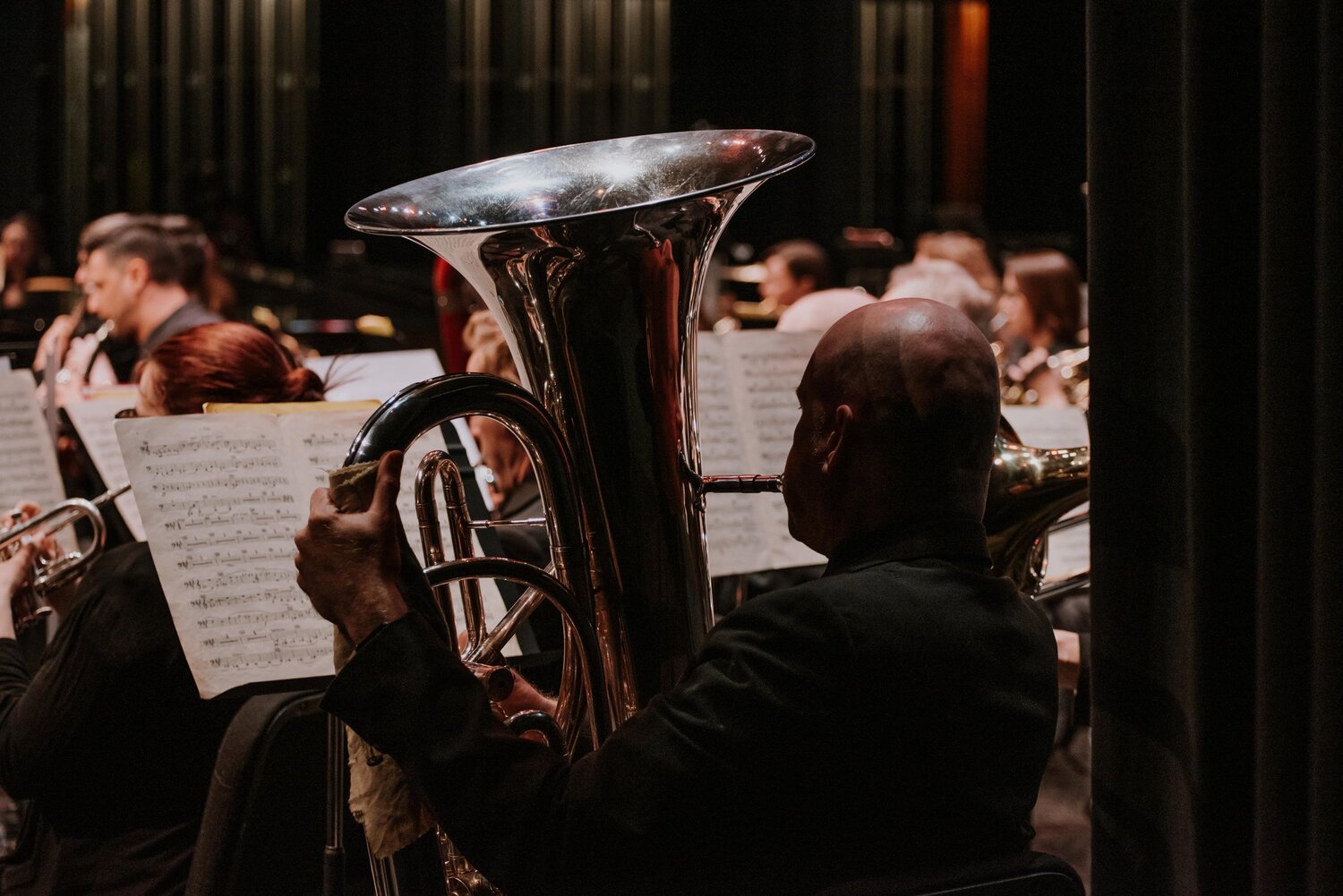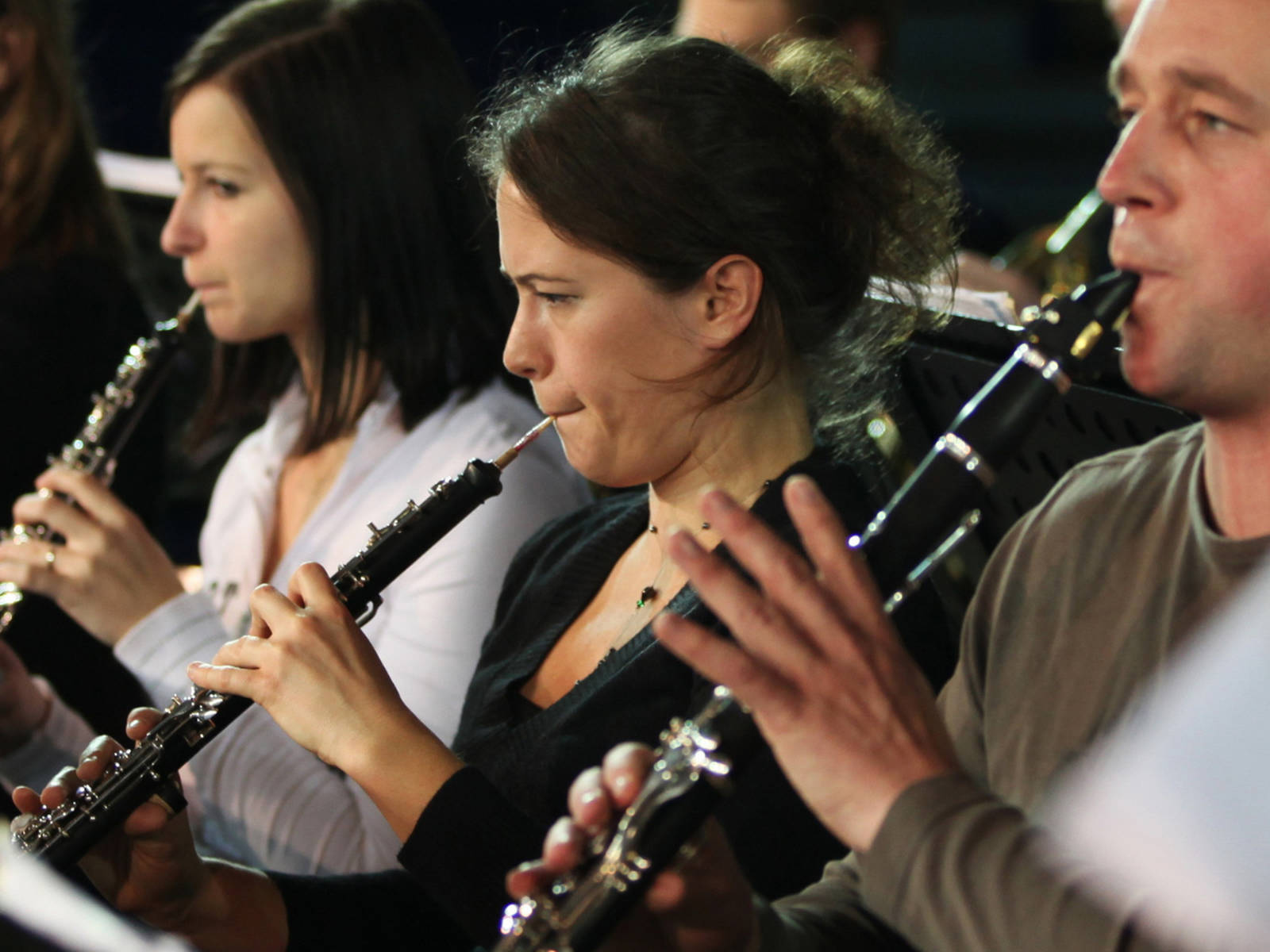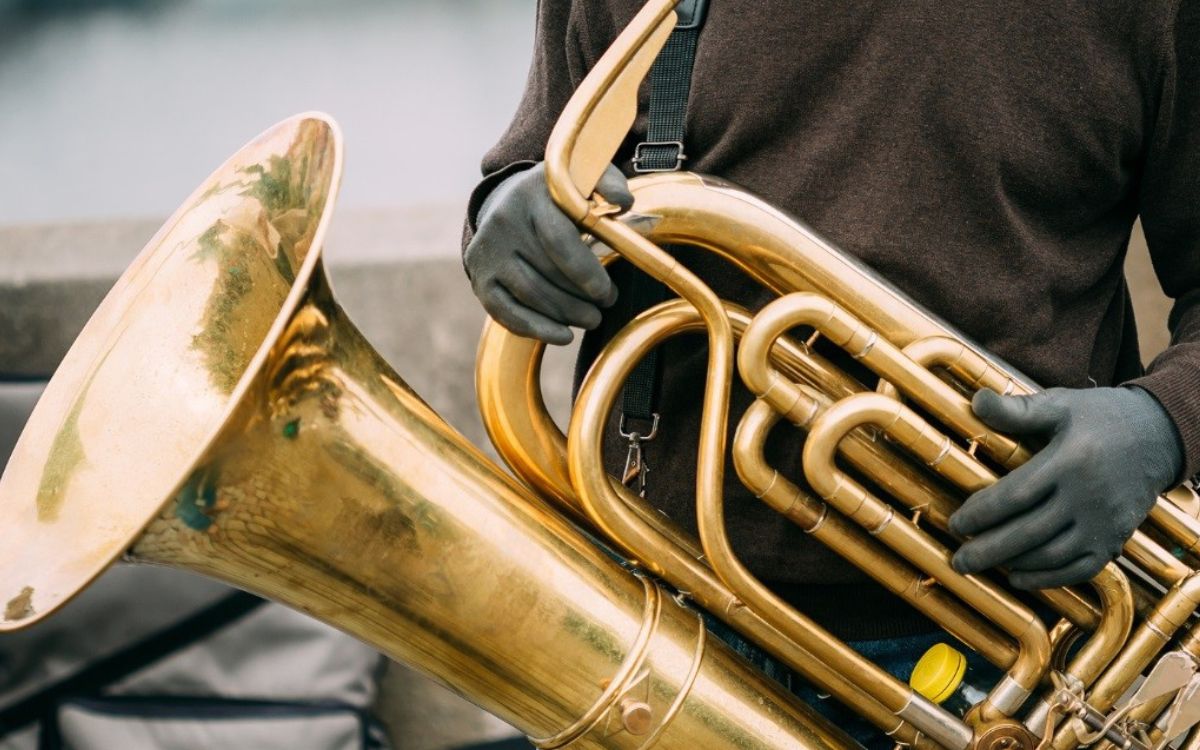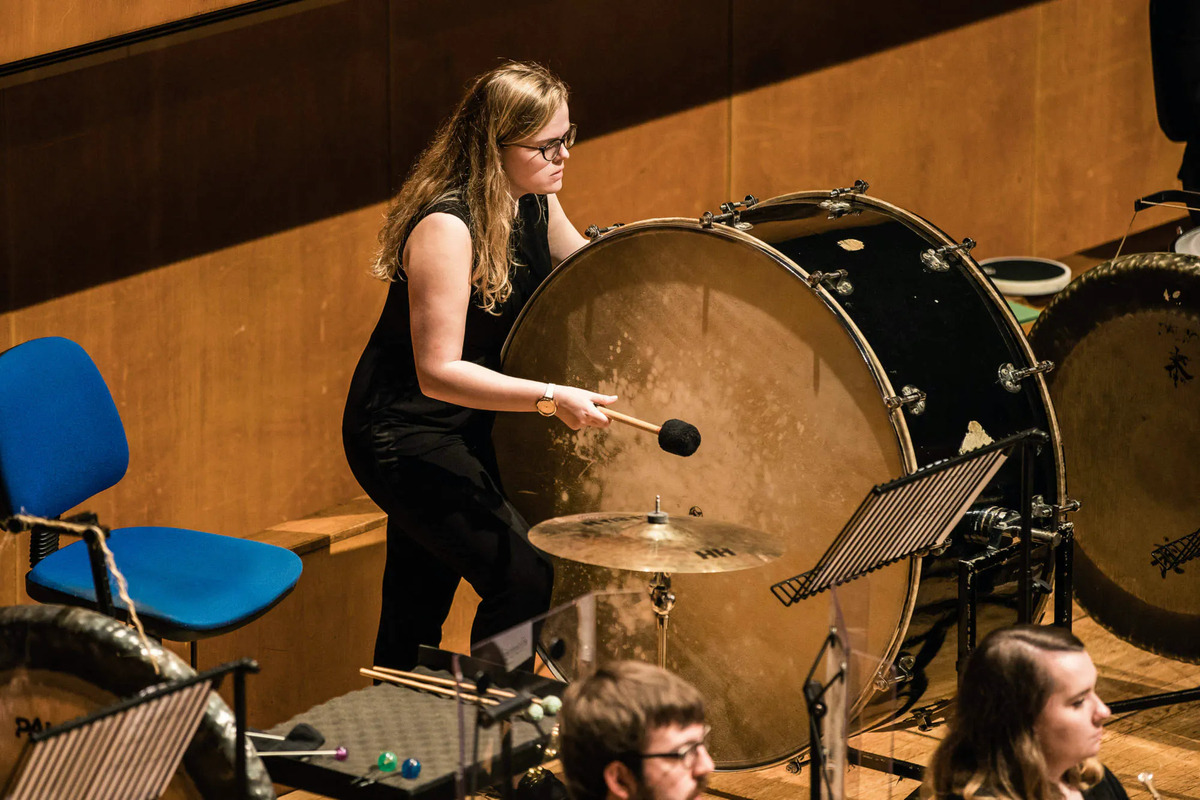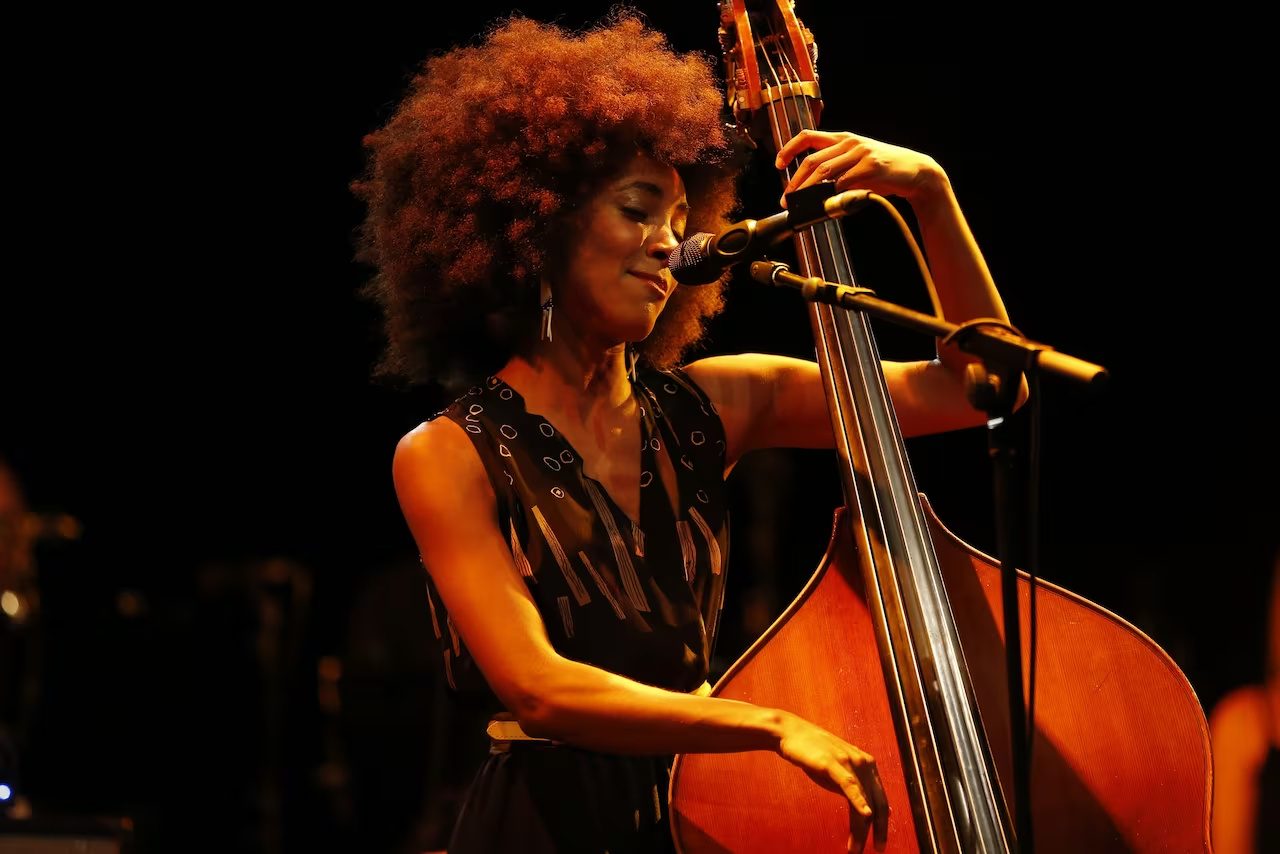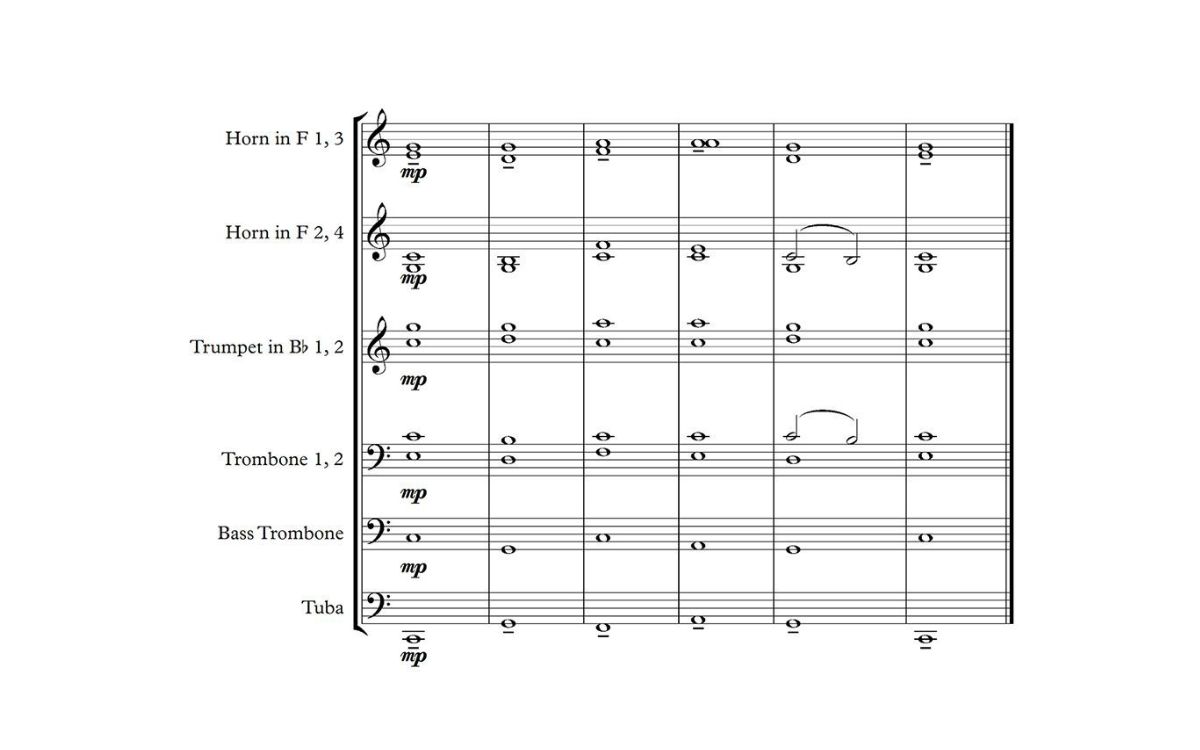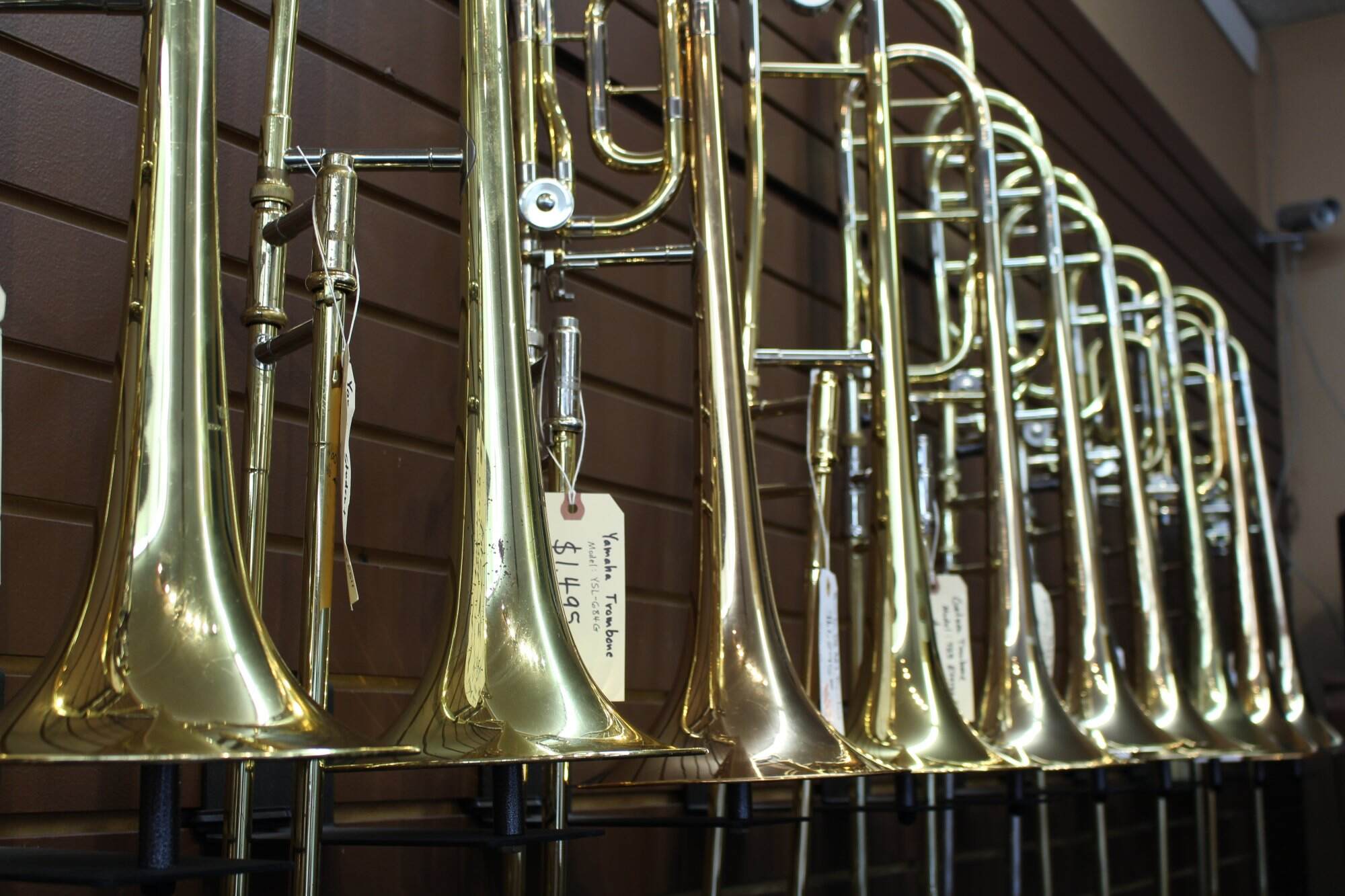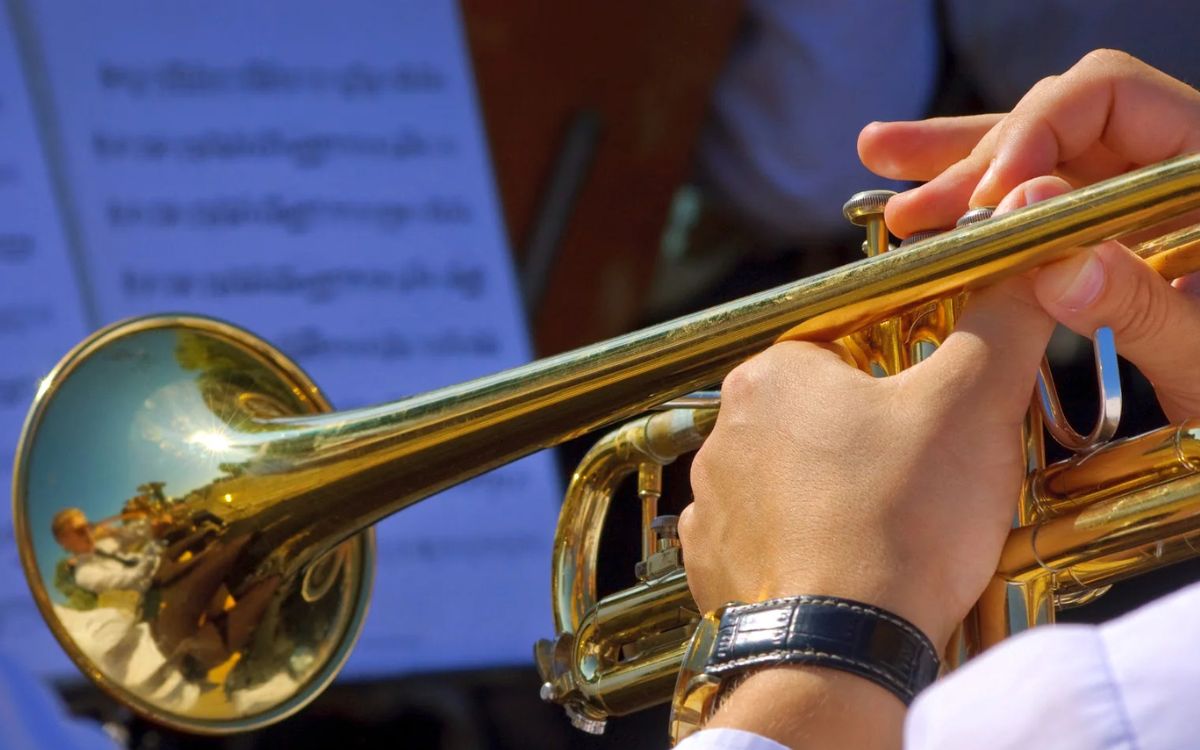Home>Production & Technology>Orchestra>What Brass Instruments Are In An Orchestra
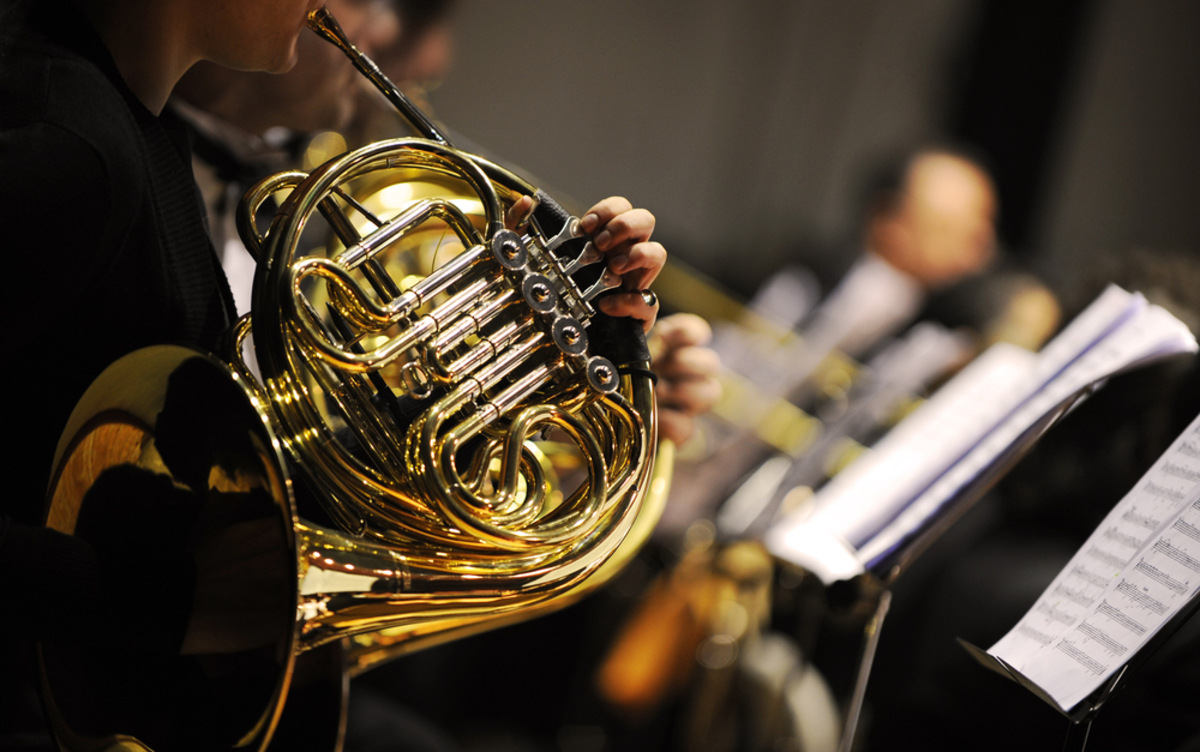

Orchestra
What Brass Instruments Are In An Orchestra
Published: February 24, 2024
Discover the brass instruments that make up an orchestra. Learn about the role of brass instruments in an orchestra and their importance in creating a powerful and harmonious sound. Explore the diverse range of brass instruments used in orchestras around the world.
(Many of the links in this article redirect to a specific reviewed product. Your purchase of these products through affiliate links helps to generate commission for AudioLover.com, at no extra cost. Learn more)
Table of Contents
Introduction
The orchestra is a harmonious blend of various musical instruments, each contributing its unique timbre and character to create a symphonic masterpiece. Among the instrumental families that constitute an orchestra, brass instruments hold a prominent position. These instruments, renowned for their powerful and resonant sound, play a pivotal role in shaping the orchestra's grandeur and depth.
The brass section of an orchestra typically comprises trumpets, French horns, trombones, and tubas. Each of these instruments possesses distinct tonal qualities and serves a specific purpose in the orchestral ensemble. Understanding the role and characteristics of these brass instruments is essential for appreciating the orchestral repertoire and the captivating performances they bring to life.
As we delve into the world of brass instruments in the orchestra, we will explore the unique attributes and historical significance of each instrument, shedding light on their evolution and enduring presence in classical and contemporary music. Join us on this melodic journey as we unravel the rich tapestry of brass instruments that enrich the orchestral landscape.
Trumpet
The trumpet, a shining emblem of the brass family, commands attention with its brilliant, penetrating sound. Its history traces back thousands of years, with ancient civilizations crafting primitive versions of the trumpet for ceremonial and military purposes. Over time, the trumpet evolved into a sophisticated instrument, gaining prominence in orchestral compositions and solo performances.
Crafted from brass and adorned with a distinctive bell and valves, the modern trumpet boasts a sleek and elegant design. Its cylindrical tubing and narrow mouthpiece facilitate the production of bright, clear tones that resonate with unparalleled clarity and resonance.
In the orchestral realm, the trumpet serves as a beacon of regal splendor, often heralding majestic fanfares, triumphant melodies, and stirring motifs. Its versatility allows it to seamlessly transition from commanding, heroic themes to tender, emotive passages, adding depth and dimension to the orchestral score.
The trumpet's role extends beyond the confines of classical orchestral music, as it features prominently in jazz ensembles, marching bands, and various contemporary genres. Its ability to convey a wide spectrum of emotions, from exuberance to melancholy, makes it a cherished instrument across diverse musical landscapes.
Within the orchestral hierarchy, the principal trumpet player, also known as the "first chair," assumes a position of leadership and artistry. Their virtuosity and command of the instrument are showcased through intricate solos, expressive phrasing, and seamless integration with the ensemble, elevating the musical tapestry with their artful interpretations.
As a testament to its enduring allure, the trumpet continues to captivate audiences with its resplendent timbre and expressive capabilities. Whether resonating through the hallowed halls of a concert hall or echoing across open-air venues, the trumpet's majestic presence enriches the musical narrative, leaving an indelible imprint on the hearts of listeners.
In essence, the trumpet stands as a paragon of brass instruments, embodying a legacy of grandeur, eloquence, and boundless musical expression. Its resounding voice, steeped in tradition and innovation, cements its status as an indispensable cornerstone of the orchestral mosaic.
French Horn
The French horn, with its graceful curves and evocative resonance, holds a place of reverence within the brass section of the orchestra. Renowned for its rich, velvety timbre and distinctive coiled shape, the French horn embodies a legacy of elegance and versatility that has endured for centuries.
Originally crafted as a hunting horn in the forests of ancient Europe, the French horn underwent a remarkable evolution, culminating in its integration into the orchestral repertoire. With its conical shape, flared bell, and intricate valve system, the modern French horn stands as a testament to the artistry and craftsmanship of instrument makers throughout history.
In the orchestral landscape, the French horn assumes a multifaceted role, weaving a tapestry of tonal hues that range from sonorous and noble to tender and lyrical. Its ability to evoke pastoral scenes, majestic fanfares, and poignant melodies endows it with a captivating allure, enriching the orchestral canvas with its expressive depth.
The French horn's distinctive sound, often described as warm and mellow, stems from its unique construction and the skillful manipulation of its conical tubing. This characteristic timbre allows the French horn to navigate a diverse array of musical styles, from classical symphonies to contemporary film scores, infusing each composition with its evocative charm.
Within the orchestral hierarchy, the principal French horn player, known as the "first horn," assumes a pivotal role in shaping the ensemble's sonic tapestry. Their mastery of the instrument, nuanced phrasing, and seamless integration with the orchestra elevate the musical narrative, lending an ethereal quality to the ensemble's collective performance.
Beyond its orchestral prominence, the French horn has found resonance in chamber music, brass ensembles, and solo repertoire, showcasing its adaptability and enduring appeal across varied musical genres. Its ability to convey a spectrum of emotions, from exuberance to introspection, positions it as a versatile and indispensable voice in the orchestral symphony.
In essence, the French horn stands as a paragon of artistic expression, embodying a legacy of refinement, emotive resonance, and boundless musical versatility. Its timeless allure and evocative tonal palette continue to captivate audiences, transcending temporal boundaries to leave an indelible imprint on the collective consciousness of music lovers worldwide.
Trombone
The trombone, with its majestic and commanding presence, occupies a prominent position within the brass section of the orchestra. Its origins can be traced back to the Renaissance era, where its predecessor, the sackbut, graced the courts and cathedrals of Europe with its regal sound. Over the centuries, the trombone evolved into a versatile and expressive instrument, earning a distinguished place in orchestral compositions and ensemble performances.
Crafted from gleaming brass and adorned with a signature slide mechanism, the trombone exudes a sense of timeless elegance. Its elongated, cylindrical tubing and wide bell facilitate the production of resonant, sonorous tones that permeate the orchestral landscape with a sense of grandeur and depth. The trombone's slide, a defining feature of the instrument, enables seamless glissandos, precise intonation, and nuanced phrasing, allowing for a remarkable range of expressive possibilities.
In the orchestral realm, the trombone serves as a stalwart foundation, lending its robust timbre to bolster the ensemble's harmonic fabric. From majestic chorales and regal fanfares to poignant lyrical passages, the trombone's versatility shines through, adding a distinctive richness and gravitas to the orchestral tapestry. Its ability to convey a spectrum of emotions, from solemn reverence to exuberant jubilation, positions it as a vital conduit for musical expression.
Within the orchestral hierarchy, the principal trombonist, often referred to as the "first trombone," assumes a pivotal role in shaping the ensemble's sonic narrative. Their virtuosity, technical prowess, and seamless integration with the orchestra elevate the musical experience, infusing each performance with a resounding depth and artistry that captivates audiences.
Beyond its orchestral prowess, the trombone has found resonance in diverse musical genres, including jazz, brass bands, and contemporary ensembles, where its expressive capabilities and dynamic range are celebrated. Its unmistakable voice, resonating with warmth and authority, continues to captivate listeners across cultural and temporal divides, reaffirming its enduring relevance in the ever-evolving tapestry of musical expression.
In essence, the trombone stands as a paragon of musical versatility, embodying a legacy of grandeur, emotive resonance, and boundless expressive potential. Its resounding presence and evocative tonal palette continue to enrich the orchestral narrative, leaving an indelible imprint on the collective consciousness of music enthusiasts worldwide.
Tuba
The tuba, revered for its commanding presence and resounding depth, stands as the cornerstone of the brass section in an orchestra. With its robust, velvety timbre and imposing stature, the tuba exudes a majestic aura that reverberates through the orchestral landscape, anchoring the ensemble with its unmistakable resonance.
Crafted from gleaming brass and characterized by its expansive, coiled tubing and flared bell, the tuba embodies a harmonious blend of artistry and engineering. Its design facilitates the production of rich, sonorous tones that underpin the orchestral fabric with a sense of grandeur and solemnity. The tuba's imposing physicality, often towering above other instruments, further accentuates its commanding presence, establishing it as a formidable force within the brass family.
In the orchestral realm, the tuba assumes a multifaceted role, lending its authoritative voice to a diverse array of musical compositions. From majestic symphonic passages and regal fanfares to solemn chorales and resonant bass lines, the tuba's versatility shines through, enriching the orchestral tapestry with its deep, resonant hues. Its ability to evoke a spectrum of emotions, from solemn reverence to triumphant exuberance, positions it as a vital cornerstone of orchestral expression.
Within the orchestral hierarchy, the principal tubist, often referred to as the "first tuba," assumes a pivotal role in shaping the ensemble's sonic narrative. Their mastery of the instrument, precise articulation, and seamless integration with the orchestra elevate the musical experience, infusing each performance with a resounding depth and artistry that captivates audiences.
Beyond its orchestral prominence, the tuba has found resonance in a myriad of musical genres, including brass ensembles, marching bands, and contemporary compositions, where its commanding presence and resonant timbre are celebrated. Its unmistakable voice, resonating with warmth and authority, continues to captivate listeners across cultural and temporal divides, reaffirming its enduring relevance in the ever-evolving tapestry of musical expression.
In essence, the tuba stands as a paragon of musical authority, embodying a legacy of grandeur, emotive resonance, and boundless expressive potential. Its resounding presence and evocative tonal palette continue to enrich the orchestral narrative, leaving an indelible imprint on the collective consciousness of music enthusiasts worldwide.
Conclusion
In the grand tapestry of orchestral music, the brass instruments stand as stalwart pillars, imparting depth, grandeur, and emotive resonance to the symphonic landscape. From the resplendent brilliance of the trumpet to the velvety richness of the French horn, the commanding presence of the trombone, and the resounding depth of the tuba, each brass instrument contributes a unique timbre and character that enriches the orchestral narrative.
As the trumpets herald triumphant fanfares, the French horns evoke pastoral scenes, the trombones resonate with majestic grandeur, and the tubas underpin the ensemble with their commanding authority, the collective voice of the brass section weaves a rich and multifaceted sonic tapestry. This symphonic mosaic, adorned with the expressive hues of brass instruments, captivates audiences with its evocative power and timeless allure.
The legacy of brass instruments in the orchestra extends beyond their historical significance and technical prowess; it encompasses a profound ability to evoke a spectrum of emotions, from exuberant jubilation to introspective contemplation. The virtuosity of the principal players, their seamless integration within the ensemble, and their artful interpretations breathe life into the orchestral scores, transporting listeners on a transcendent musical journey.
Furthermore, the enduring appeal of brass instruments resonates across genres and generations, transcending cultural boundaries to leave an indelible imprint on the collective consciousness of music enthusiasts worldwide. Whether resonating through the hallowed halls of classical concert venues, enriching cinematic soundtracks, or infusing contemporary compositions with their timeless resonance, brass instruments continue to shape the ever-evolving tapestry of musical expression.
In conclusion, the brass instruments in the orchestra embody a legacy of artistry, versatility, and boundless expressive potential. Their resplendent timbres, commanding presence, and evocative capabilities converge to form an integral part of the orchestral mosaic, enriching the musical landscape with their enduring allure and timeless resonance. As the symphony unfolds, the resounding voices of the brass instruments stand as a testament to the enduring power of music to inspire, uplift, and unite audiences across the globe.

